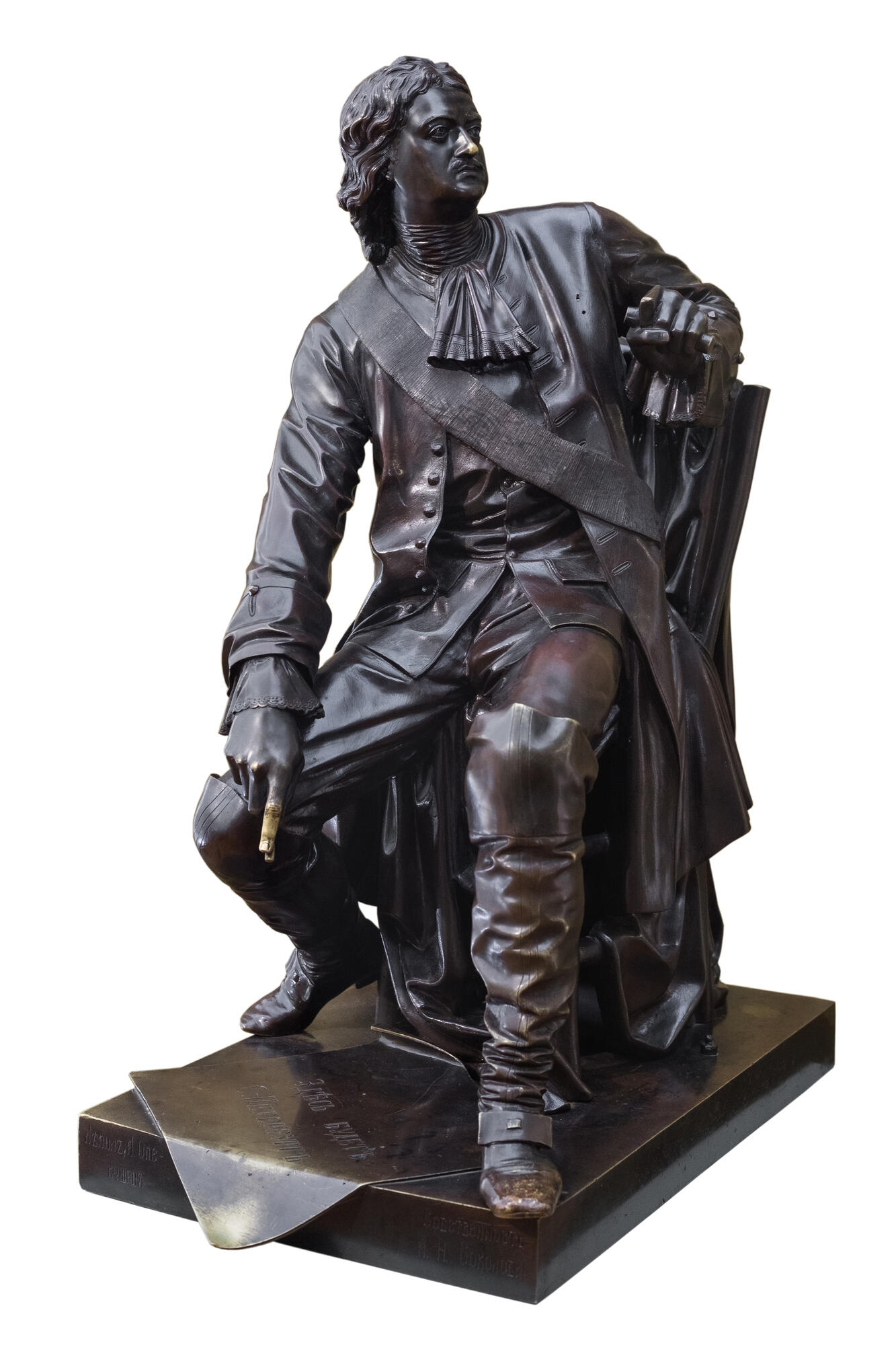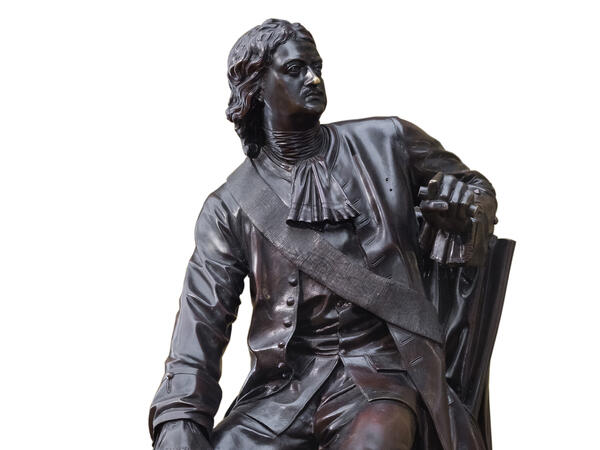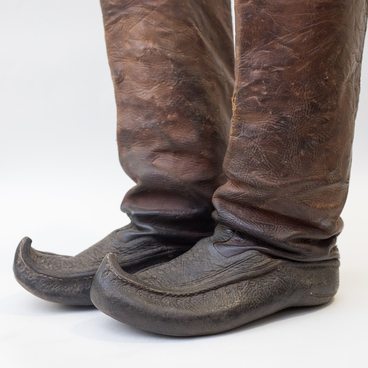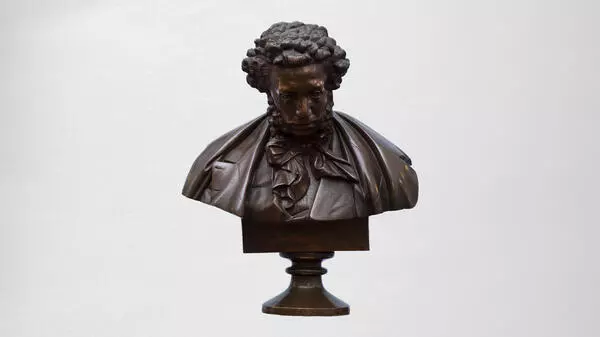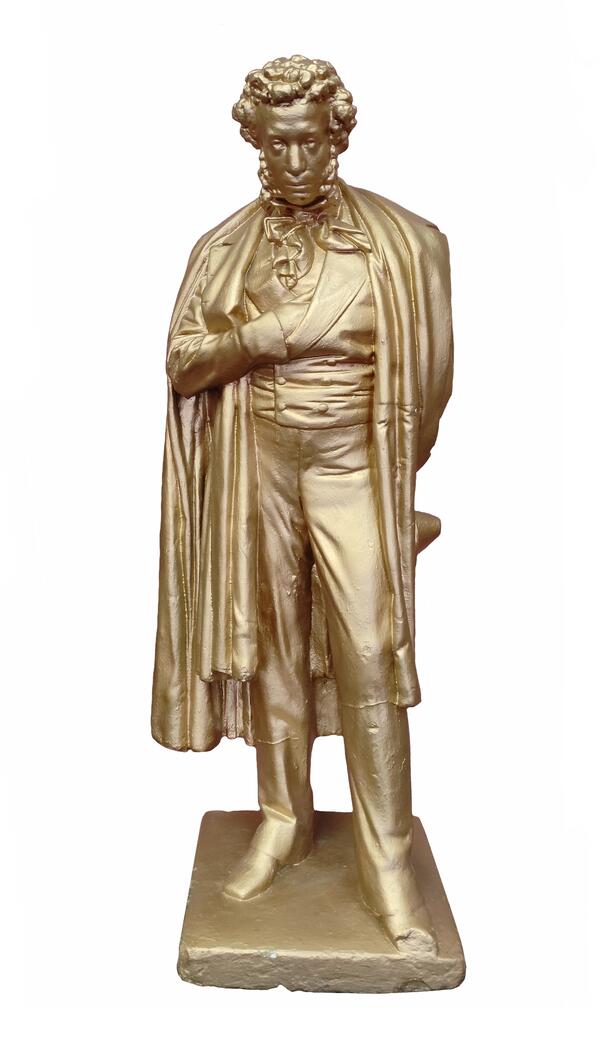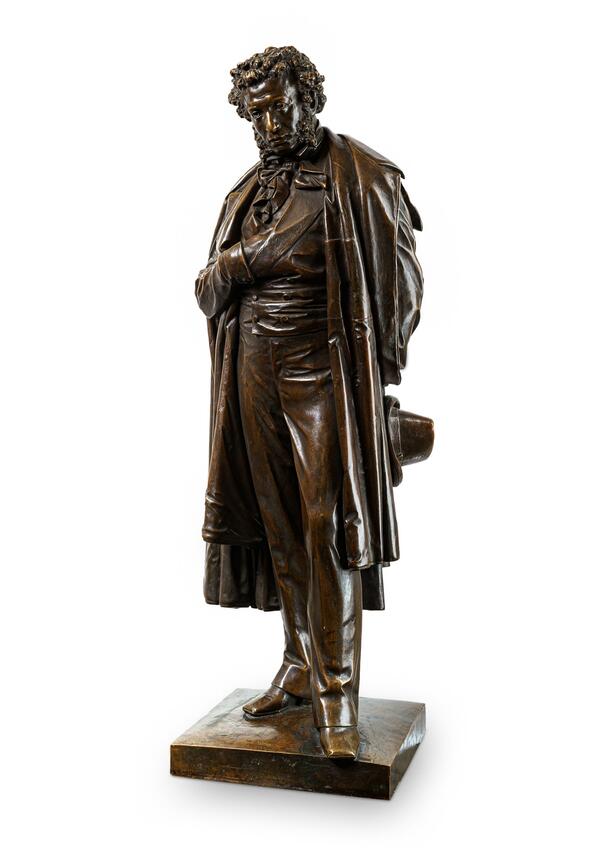The museum houses the sculpture “Peter I”. The first emperor of Russia is depicted sitting on a high chair. There is a map of the Baltic Sea coast below. There is an inscription “St. Petersburg will be here” on the map. The figure of Peter I was made of bronze at the Alexander Sokolov’s factory in St. Petersburg in 1872 by Alexander Opekushin.
Alexander Sokolov’s “Factory of Bronze, Gold and Silver Products” operated from 1856 to 1890. It had a large annual turnover — 75,000 rubles. The factory products were several times exhibited at the All-Russia Industrial and Art Exhibitions, and Alexander Sokolov received government awards. He was one of the first Russians who started the mass production of figurines. Alexander Sokolov employed the best artists of Russia.
The sculpture is 60 centimeters high. There are two inscriptions: “ЛѢпилъ А.Опекушинъ” (“Sculpted by A. Opekushin”) and “Собственность А.Н. Соколова” (“The property of A. N. Sokolov”). Alexander Opekushin made several versions of the sculpture. He sculpted Peter the Great in full-size, with the right arm extended, as if pointing the way to Russia; then he sculpted him sitting with the map of the Baltic Sea coast below, pondering the construction of the future capital St. Petersburg. It is the second variant that can be seen in the museum.
Alexander Opekushin was born on November 28, 1838, in the village of Svechkino, Danilovsky District, the Yaroslavl Governorate, into the family of a serf peasant. His father regularly visited St. Petersburg, and Alexander entered the Drawing School of the Imperial Society for the Encouragement of Artists. He was to study there for three years with the consent of the landowner. The sculptor David Jensen noticed the talented young man and invited him to his studio in St. Petersburg. In order to become a sculptor, Alexander Opekushin had to pay for his freedom — serfs were forbidden to study at the Academy. In 1859, he became free.
In 1864, the Imperial Academy of Arts awarded Alexander Opekushin a silver medal for the sculptural sketches “Belisarius” and “Cupid and Psyche”. He was awarded the title of class artist of the 2nd degree in 1869 and class artist of the 1st degree in 1870. The title of class artist exempted from poll tax and military service. In 1872, Alexander Opekushin received the diploma of the academician of sculpture for the outstanding bust of Nicholas Alexandrovich, Tsesarevich of Russia, and the statue of Peter the Great.
Alexander Sokolov’s “Factory of Bronze, Gold and Silver Products” operated from 1856 to 1890. It had a large annual turnover — 75,000 rubles. The factory products were several times exhibited at the All-Russia Industrial and Art Exhibitions, and Alexander Sokolov received government awards. He was one of the first Russians who started the mass production of figurines. Alexander Sokolov employed the best artists of Russia.
The sculpture is 60 centimeters high. There are two inscriptions: “ЛѢпилъ А.Опекушинъ” (“Sculpted by A. Opekushin”) and “Собственность А.Н. Соколова” (“The property of A. N. Sokolov”). Alexander Opekushin made several versions of the sculpture. He sculpted Peter the Great in full-size, with the right arm extended, as if pointing the way to Russia; then he sculpted him sitting with the map of the Baltic Sea coast below, pondering the construction of the future capital St. Petersburg. It is the second variant that can be seen in the museum.
Alexander Opekushin was born on November 28, 1838, in the village of Svechkino, Danilovsky District, the Yaroslavl Governorate, into the family of a serf peasant. His father regularly visited St. Petersburg, and Alexander entered the Drawing School of the Imperial Society for the Encouragement of Artists. He was to study there for three years with the consent of the landowner. The sculptor David Jensen noticed the talented young man and invited him to his studio in St. Petersburg. In order to become a sculptor, Alexander Opekushin had to pay for his freedom — serfs were forbidden to study at the Academy. In 1859, he became free.
In 1864, the Imperial Academy of Arts awarded Alexander Opekushin a silver medal for the sculptural sketches “Belisarius” and “Cupid and Psyche”. He was awarded the title of class artist of the 2nd degree in 1869 and class artist of the 1st degree in 1870. The title of class artist exempted from poll tax and military service. In 1872, Alexander Opekushin received the diploma of the academician of sculpture for the outstanding bust of Nicholas Alexandrovich, Tsesarevich of Russia, and the statue of Peter the Great.
